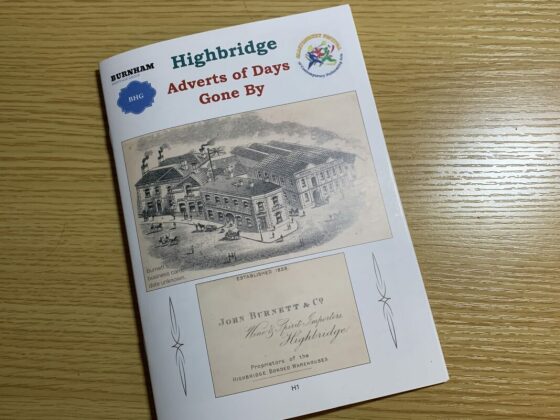Exploring The Agatha Christie Echoes In M. Night Shyamalan's "The Village"

Table of Contents
The Importance of Misdirection and Red Herrings
Both Agatha Christie and M. Night Shyamalan are masters of misdirection, expertly employing red herrings to keep their audiences perpetually guessing. This technique is crucial in building suspense and delaying the gratification of revealing the truth. Christie's novels are rife with misleading clues, cleverly designed to distract the reader and the fictional detectives alike.
- Examples from Christie: In And Then There Were None, the initial suspicion falls on various characters before the true killer is revealed, while The Murder of Roger Ackroyd utilizes an unreliable narrator to profoundly mislead the reader throughout. These masterful uses of misdirection exemplify her skill in crafting intricate plots.
- "The Village" Misdirection: Shyamalan employs similar tactics in "The Village." The initial fear of creatures in the woods serves as a significant red herring, diverting attention from the true source of the villagers' plight. The seemingly idyllic community, with its strict rules and superstitions, hides a far darker reality, mirroring Christie's deceptive settings.
- Building Suspense: The strategic placement of misleading clues and red herrings in both Christie's novels and "The Village" intensifies the atmosphere of mystery and intrigue, constantly keeping the audience on the edge of their seats. The uncertainty created by these techniques significantly contributes to the overall suspense and psychological impact of the narratives.
The Role of the Unreliable Narrator
The unreliable narrator is a powerful tool used by both Christie and Shyamalan to manipulate the audience's perception of events. By withholding information or presenting a biased perspective, they create ambiguity and suspense.
- Christie's Unreliable Narrators: Christie frequently uses unreliable narrators, notably in The Murder of Roger Ackroyd, where the narrator is directly involved in the crime, subtly shaping the reader's understanding of events. This manipulation heightens the tension and adds a layer of psychological complexity to the mystery.
- Perspective in "The Village": In "The Village," the perspectives of the villagers, particularly those of Lucius Hunt and Ivy Walker, are presented as limited and influenced by the community's ingrained fears and beliefs. This controlled perspective, like Christie's unreliable narrators, shapes the audience's understanding of the situation. The withholding of crucial information throughout the film amplifies this effect.
- Creating Tension: The use of the unreliable narrator, by deliberately obscuring the truth, significantly contributes to the suspense and psychological tension in both Christie's work and Shyamalan's film. The audience is constantly questioning the validity of the information presented, creating a more engaging and captivating experience.
The Unveiling of the Truth and its Impact
Both Christie and Shyamalan masterfully orchestrate the unveiling of the truth, though their methods differ. Christie often employs a gradual reveal, meticulously piecing together the clues until the ultimate solution is presented. Shyamalan, however, opts for a more dramatic, shocking reveal, often in a climactic twist ending.
- Gradual vs. Dramatic Reveal: Christie’s mysteries unfold through careful deduction, building the tension until the final revelation. "The Village," conversely, holds back crucial information until the very end, creating a more shocking and surprising impact.
- Psychological Impact: The psychological impact of the truth differs in each context. Christie's reveals often focus on the intellectual satisfaction of solving the puzzle, while Shyamalan’s aim for a visceral reaction, leaving the audience grappling with the implications of the unexpected truth.
- Villains and Motivation: The "villains" in both instances have distinct motivations. Christie's villains often act out of greed, revenge, or a twisted sense of justice. In "The Village," the "villain" is a more complex entity - the collective fear and self-imposed restrictions of the community itself.
Shared Thematic Concerns: Fear, Isolation, and the Power of Belief
Underlying both Christie's novels and "The Village" are shared thematic concerns: fear, isolation, and the power of belief. These interconnected themes significantly shape the characters' actions and the narratives' overall impact.
- Fear and Isolation: Both explore how fear and isolation can warp perception and lead to irrational actions. The characters in Christie's works often find themselves trapped in precarious situations, fostering a sense of paranoia and isolation. Similarly, the isolated community in "The Village" is consumed by fear, leading to self-destructive choices.
- Belief Systems: The influence of collective belief systems is a critical component in both. In Christie's mysteries, societal norms and expectations can be manipulated or exploited by the perpetrators. In "The Village," the fabricated history and fear of the "creatures" function as a powerful belief system that dictates every aspect of their lives.
- Societal Structures: Both narratives critically examine the impact of societal structures on individual choices. The rigid social order in "The Village" reflects a broader commentary on the power of collective belief systems and their potential to suppress individual freedom and critical thinking.
Conclusion
Agatha Christie's influence on contemporary thriller writers is undeniable, and M. Night Shyamalan's "The Village" serves as a potent example. The film effectively utilizes misdirection, features an unreliable narrative voice, and explores thematic concerns strikingly similar to Christie’s work. The strategic use of red herrings, the gradual (in Christie) or dramatic (in Shyamalan) unveiling of the truth, and the examination of fear, isolation, and the power of belief showcase the lasting impact of Christie's masterful storytelling. Re-examine the mysteries of both Christie and Shyamalan; explore the echoes of Christie in "The Village" to discover the subtle parallels and uncover the suspense woven into these seemingly disparate works. The significant connection between these seemingly disparate works lies in their shared mastery of suspense and psychological intrigue, demonstrating Christie's enduring legacy.

Featured Posts
-
 Rusenje Daytonskog Sporazuma Tadi Ceva Analiza I Posljedice Za Sarajevo
May 20, 2025
Rusenje Daytonskog Sporazuma Tadi Ceva Analiza I Posljedice Za Sarajevo
May 20, 2025 -
 Tarihe Gecen Bir Yildiz Dusan Tadic In Basari Hikayesi
May 20, 2025
Tarihe Gecen Bir Yildiz Dusan Tadic In Basari Hikayesi
May 20, 2025 -
 Nyt Mini Crossword March 13 2025 Complete Solutions
May 20, 2025
Nyt Mini Crossword March 13 2025 Complete Solutions
May 20, 2025 -
 Ivoire Tech Forum 2025 Opportunites Et Defis De La Transformation Numerique En Afrique
May 20, 2025
Ivoire Tech Forum 2025 Opportunites Et Defis De La Transformation Numerique En Afrique
May 20, 2025 -
 Historic Burnham And Highbridge Photographs Now Accessible Archive Opens Tomorrow
May 20, 2025
Historic Burnham And Highbridge Photographs Now Accessible Archive Opens Tomorrow
May 20, 2025
Latest Posts
-
 Examining The Potential For A Resurgence Of American Factory Jobs
May 20, 2025
Examining The Potential For A Resurgence Of American Factory Jobs
May 20, 2025 -
 Analyzing Emerging Business Hubs A Nationwide Perspective
May 20, 2025
Analyzing Emerging Business Hubs A Nationwide Perspective
May 20, 2025 -
 The Economic Impact Of Bringing Factory Jobs Back To The Us
May 20, 2025
The Economic Impact Of Bringing Factory Jobs Back To The Us
May 20, 2025 -
 The Countrys Top Business Hot Spots Growth Trends And Opportunities
May 20, 2025
The Countrys Top Business Hot Spots Growth Trends And Opportunities
May 20, 2025 -
 Reviving American Manufacturing Addressing The Challenges Of Job Creation
May 20, 2025
Reviving American Manufacturing Addressing The Challenges Of Job Creation
May 20, 2025
